- © 2025 Annapolis Home Magazine
- All Rights Reserved
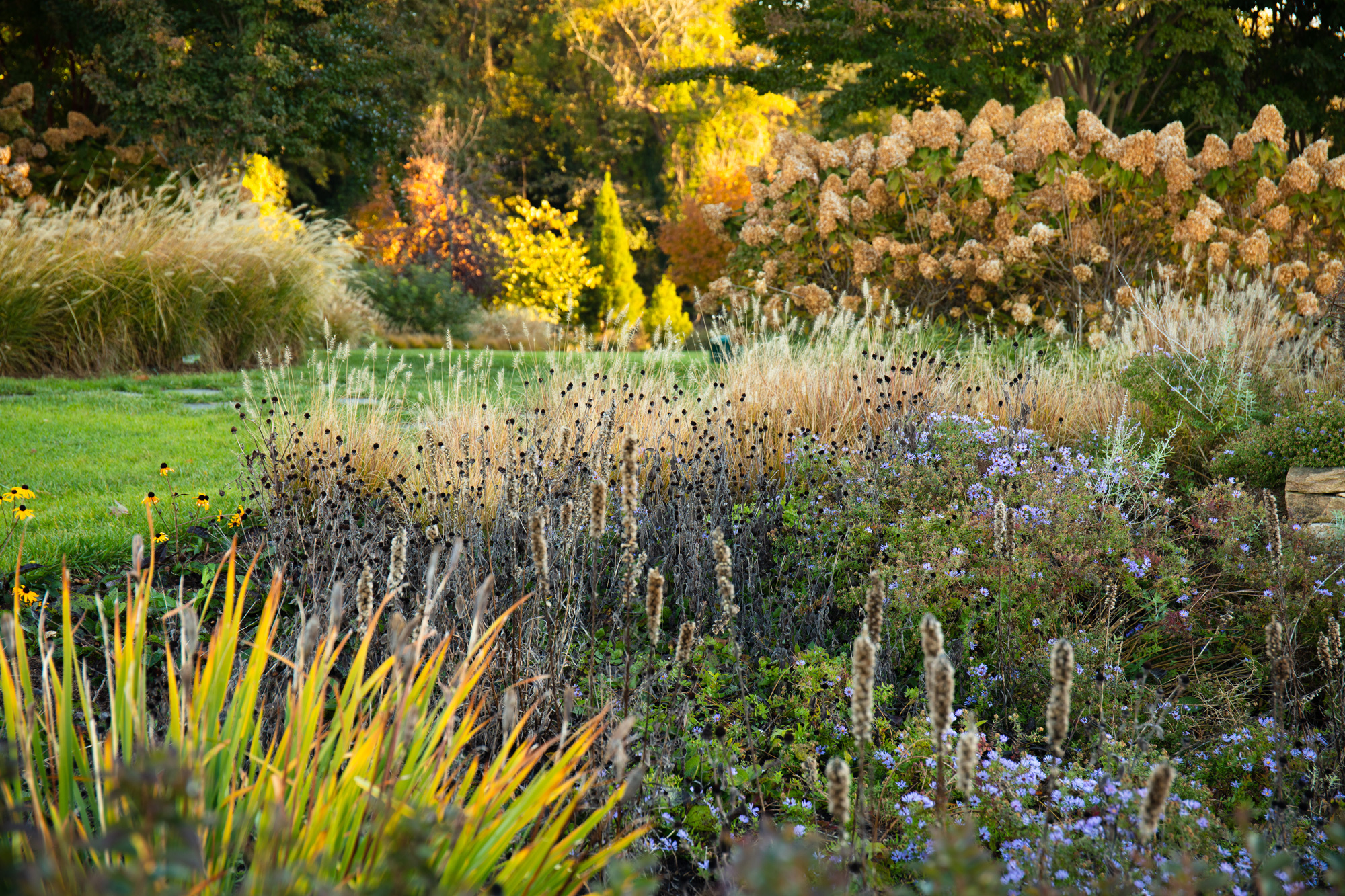
Pennisetum orientale has efflorescent seed heads, rising above aster oblongifolius ‘October Skies.’ The asters are punctuated by spent vertical flowers of Liatris spicata with the yellowing blades of an iris in the foreground.
As fall creeps in, I head back to the garden high above the Severn River to observe my favorite season. Summer seemed to drag on this year, yet the transformation from heat and humidity to cool and dry air happened practically overnight. We are confronted with the final re-bloomers of summer, alongside the fall bloomers and the skeletal remains of plants that have checked out for the year. These arrangements are highlighted by the fall foliage brought on by the cool nights. The changes in temperature, the wind and the rain can make these final fleeting moments of the season easy to miss.
I call attention to all of this because when it comes to designing a four-season garden, you have to think about what plants look like in their final season stage, alongside plants that are just having their moment. Repetition of fall flowers, ornamental grasses, dried stems, fruit and colorful foliage can lead your eye through the garden. Following are some to get you started.

Monarch butterflies visiting 6′ tall aster tataricus ‘Jindai.’
Asters are great fall flowering perennials that come in a variety of sizes and range of purples and blues. Combine native asters with fine textured grasses and perennials for a great late season show. Goldenrods have panicles of showy yellow flowers in late summer and fall. This fine textured perennial, spreading by seed and rhizomes, will out-compete the weeds and other weaker perennial plants.
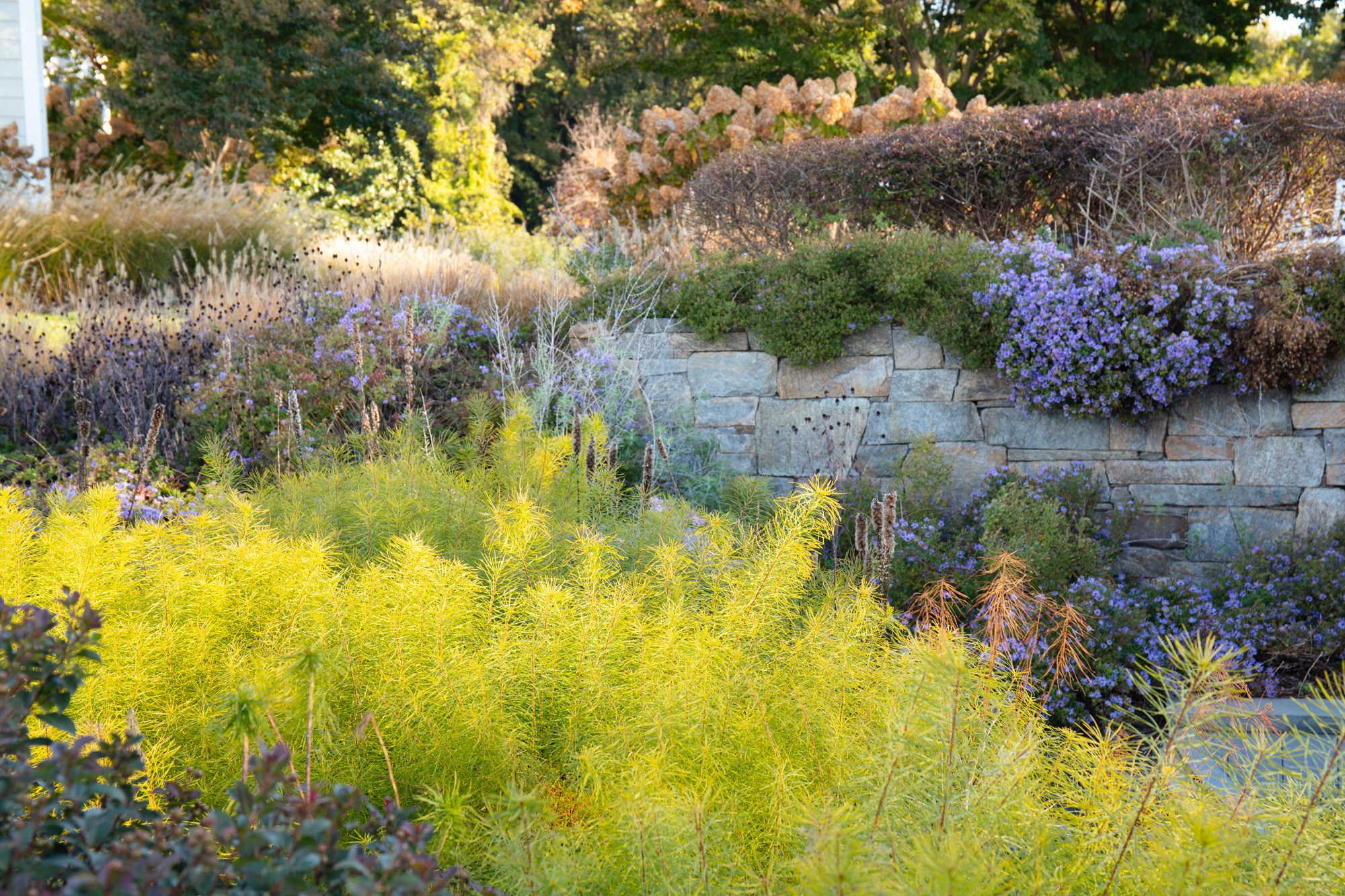
Amsonia in the foreground is framing the aster oblongifolius ‘October Skies’ hanging over the stone wall.
The fine texture of warm season grasses is a nice green filler in the summer perennial border. In the fall, the fountain grass and switchgrass species come alive with blooms, seed heads and color. The filler of summer becomes the dominant feature in the fall landscape.
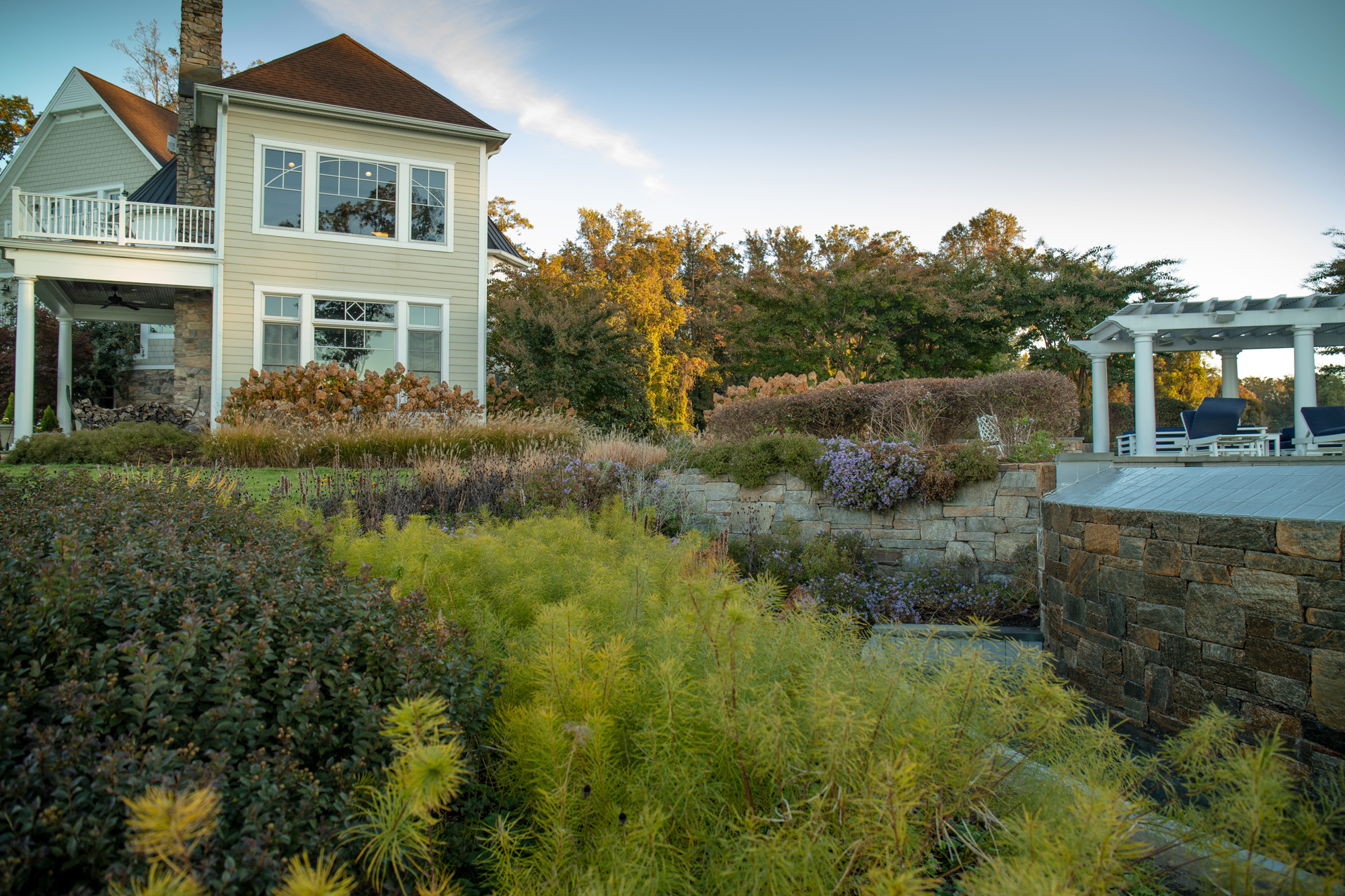
Layers of amsonia hubrichtii are changing to yellow, in contrast with the dark foliage of a dwarf crepe myrtle.
The early to mid-summer blooming black-eyed Susan and coneflowers dry out in late August. The dark stems and seed head “buttons” dance as sculpture above the grasses in the fall. While these plants add structure to the garden, their seed heads host a variety of insects and provide a food source for birds.
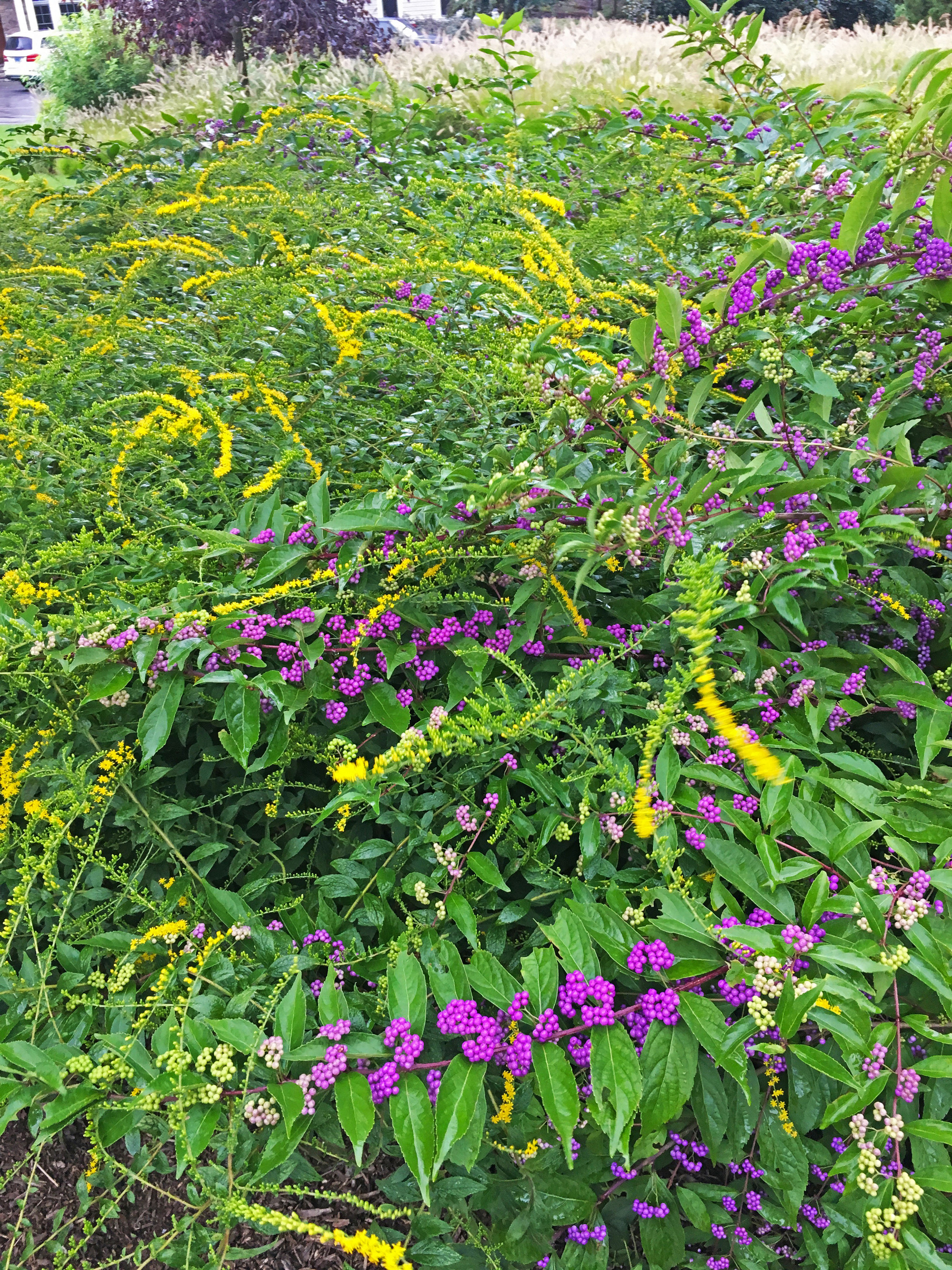
Solidago rugosa ‘Fireworks’ surround the callicarpa dichotoma shrub.
Two fruit-producing shrubs of the fall and winter are beautyberry and winterberry holly. The vibrant purple berries of the beautyberry hit their stride when the goldenrods are
in bloom. This wonderful combination only lasts a few weeks, while the red winter berries persist as long as the birds allow. These shrubs love wet soil and look great with ornamental grasses.
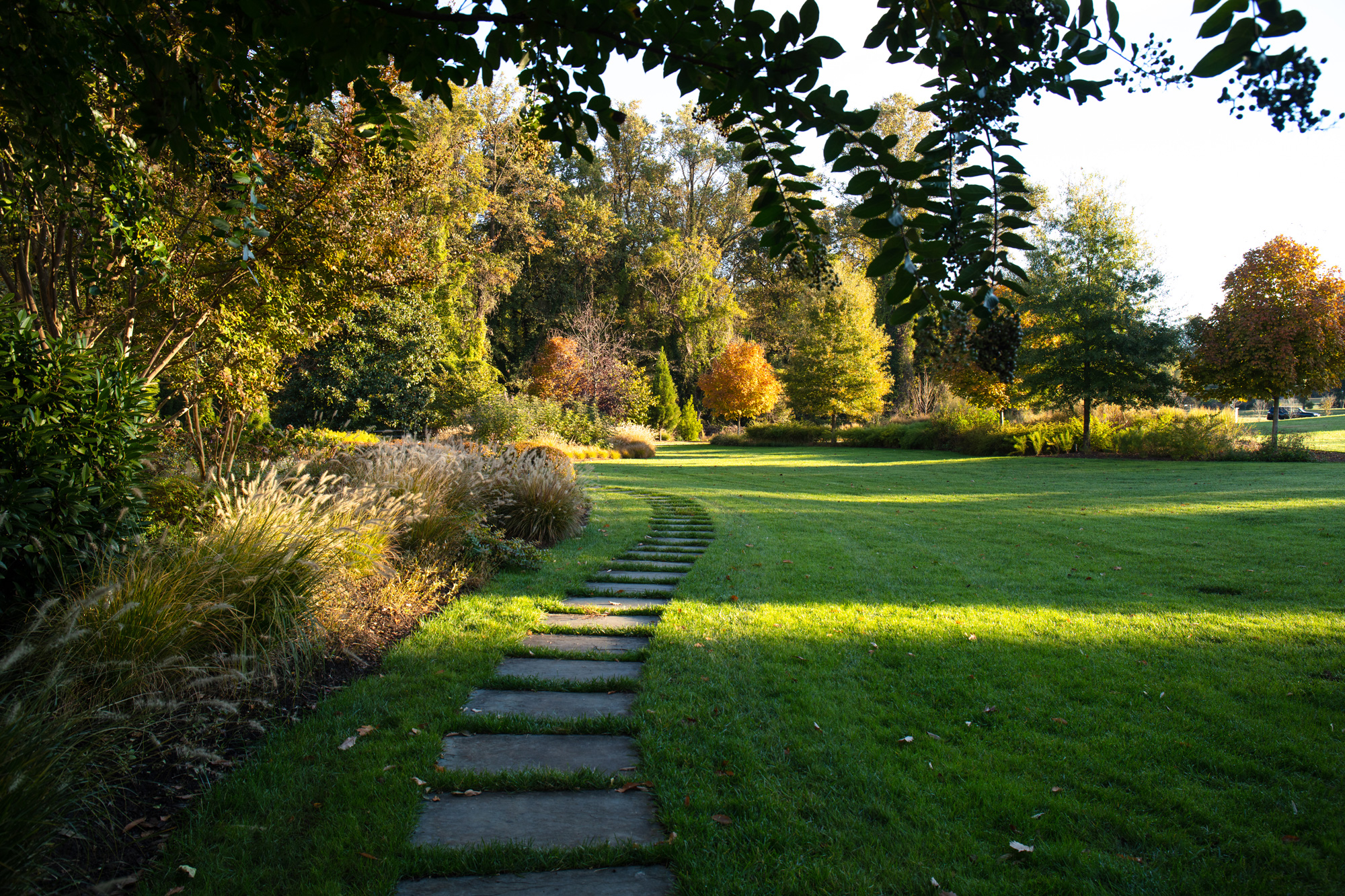
Long fall view.
There are a few perennials and many shrubs that have remarkable fall-colored foliage. My favorite perennial example is amsonia, which turns from green to yellow to orange after a few cold nights. This fine textured plant has something to offer in every season. The Virginia sweetspire shrub turns burgundy in the fall and can tolerate the wet clay soils in your garden. Combine both of these with asters.
As you can see, the overlapping fall transformations make up fast moving combinations that are easy to miss. Try to get out and see this before the leaves blanket the landscape for the winter.
Bob Hruby spent most of his life playing and working on and around the Chesapeake Bay, and lives with his wife and three kids in Annapolis. His passion for design, building and the environment led him to earn degrees in Architecture and Landscape Architecture. He and his business partner Kevin Campion lead a firm of award-winning landscape architects in Annapolis.
RESOURCE:
LANDSCAPE ARCHITECT: Campion Hruby Landscape Architects, campionhruby.com, Annapolis Maryland
Annapolis Home Magazine
Vol. 9, No. 6 2018